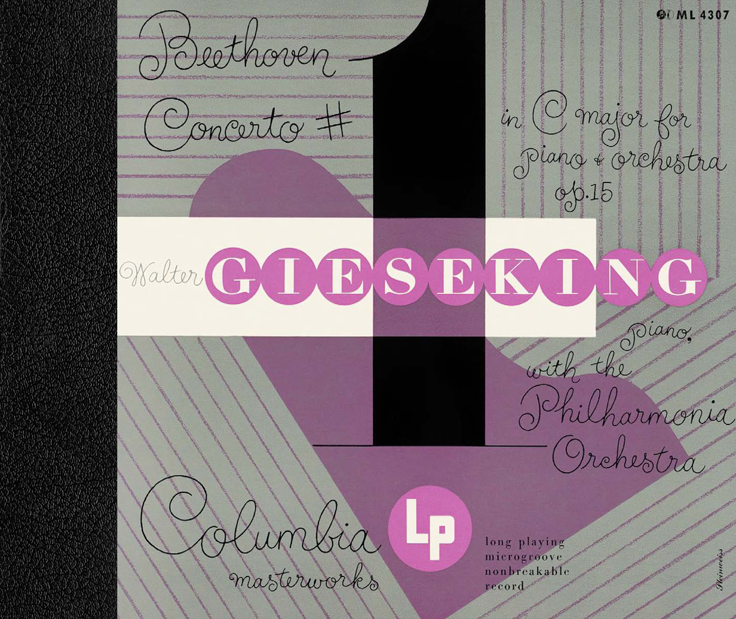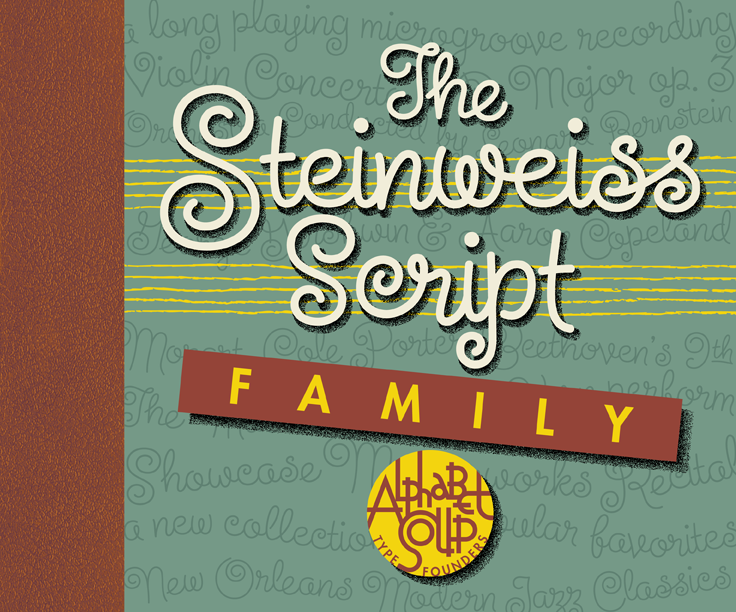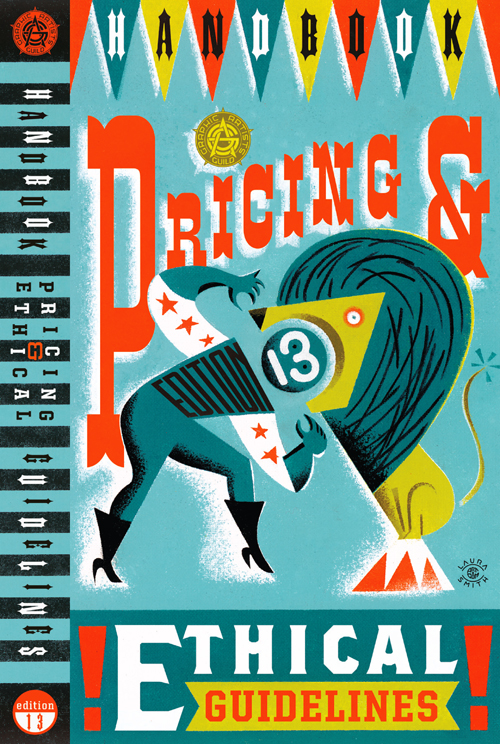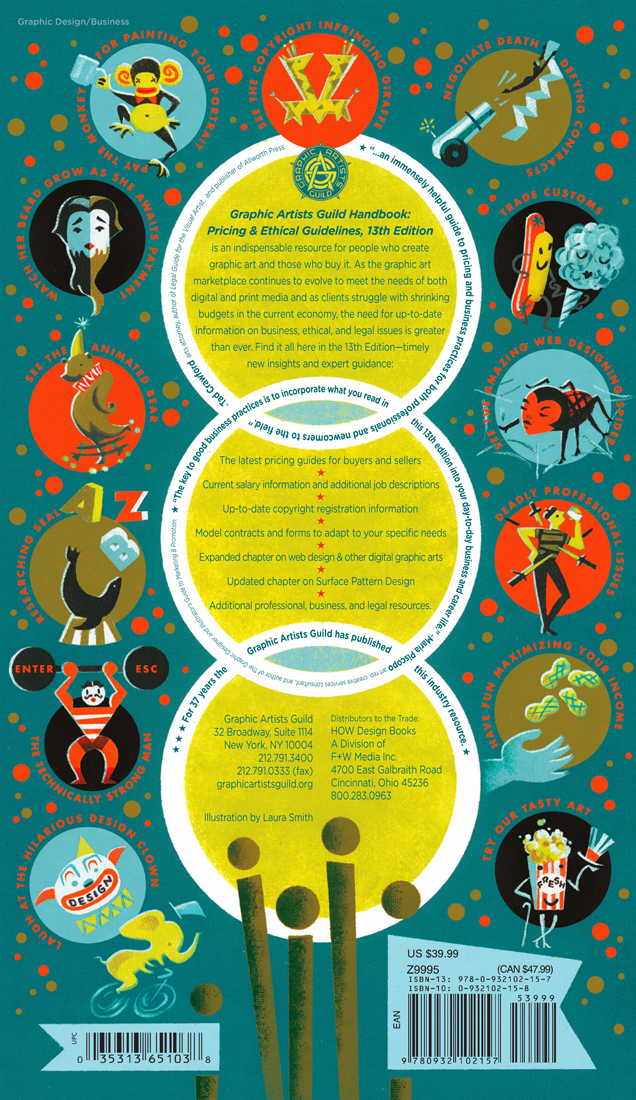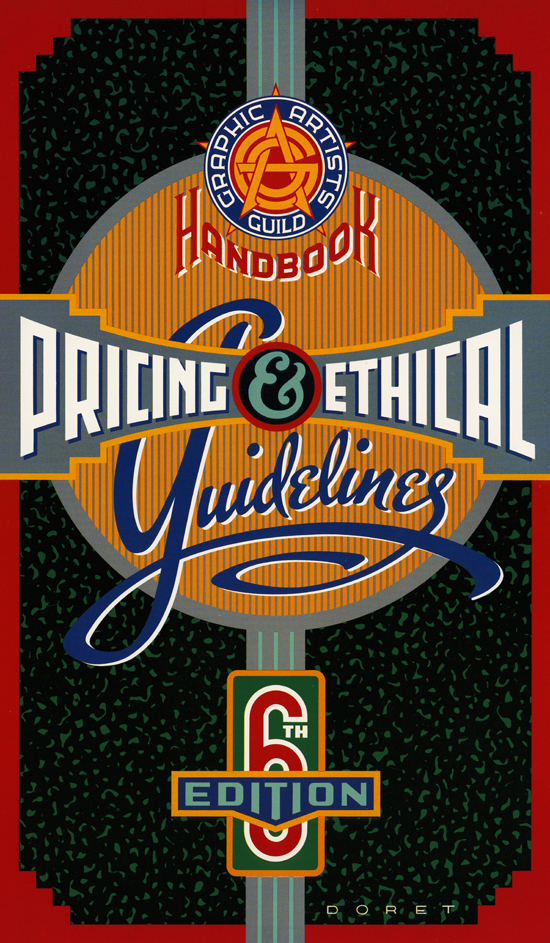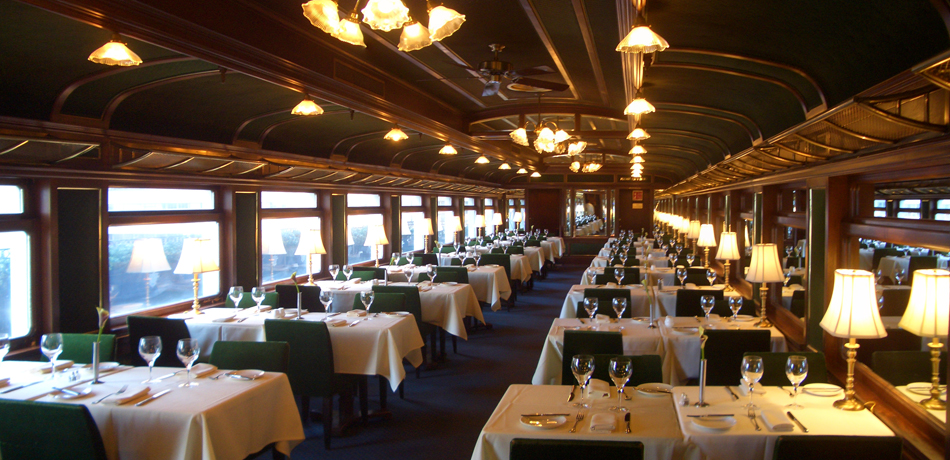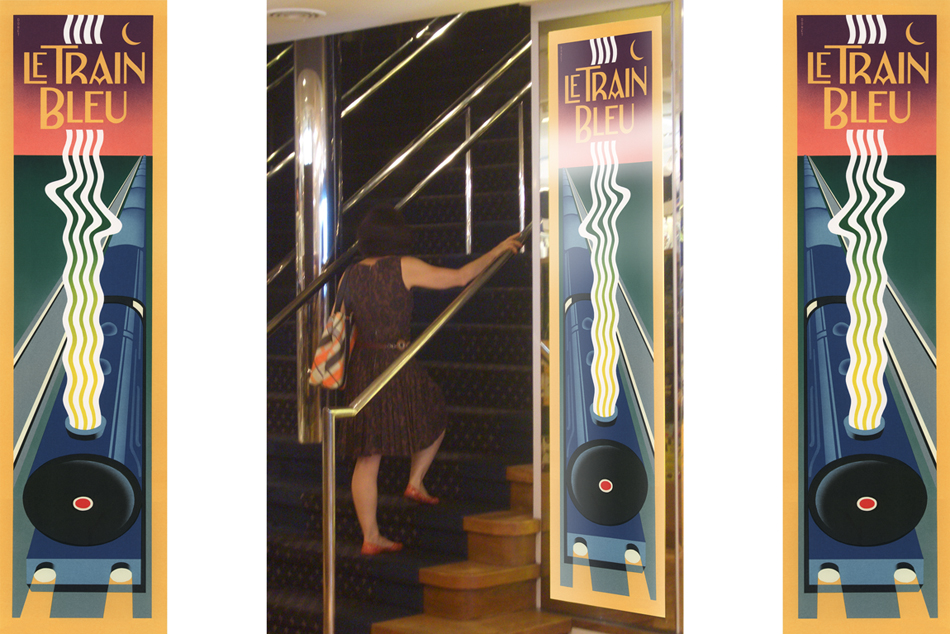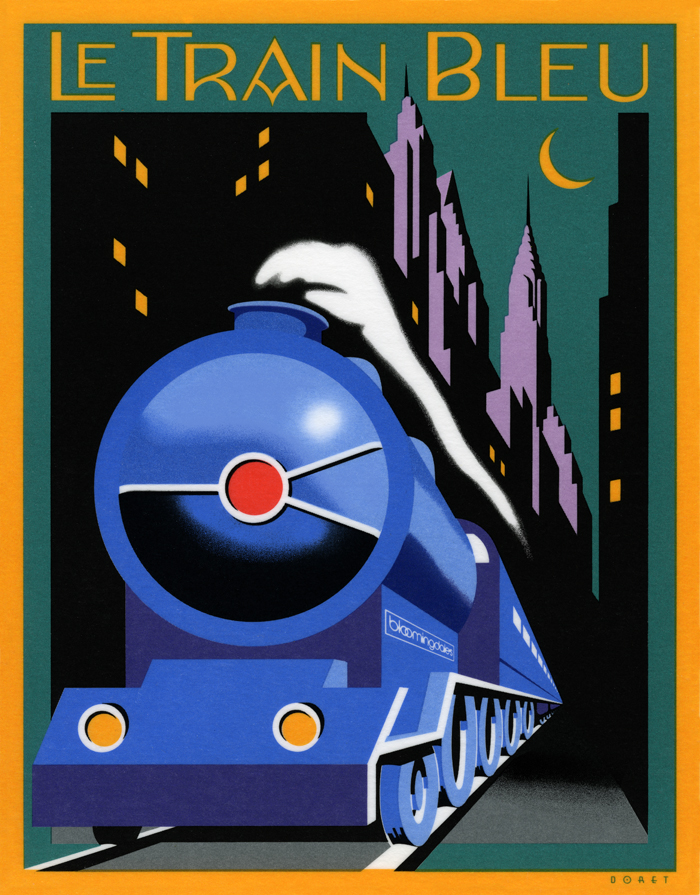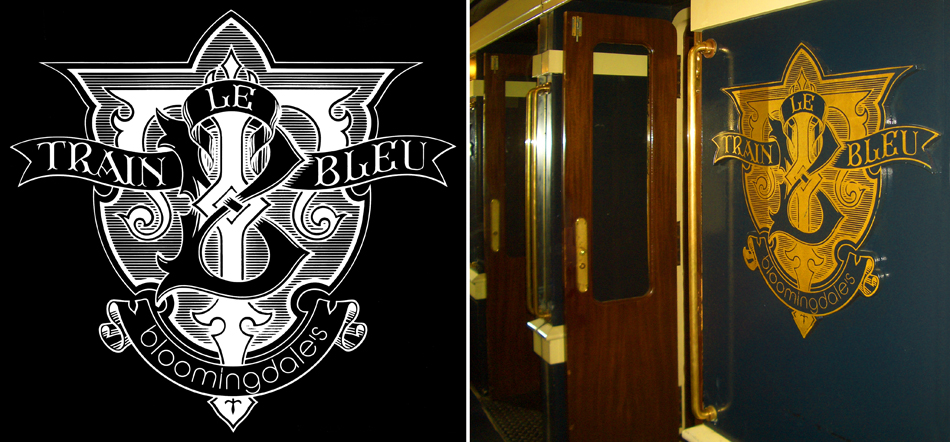 |
|
Archive for the 'Gigs' Category
“Steinweiss Script”…Soon to be Released
October 31, 2010 on 9:37 pm | By Michael | In Gigs, News | 6 CommentsBack in the summer of 2009 I was contacted by Josh Baker at Taschen Publishing about doing some work on the huge commemorative edition they were putting together on the work of Alex Steinweiss. For those of you who are not familiar with that name, Mr. Steinweiss is considered to be the inventor of the album cover as we have come to know it—as a kind of mini-poster with graphics relating to the musical content of the album. He produced hundreds of covers for 78 RPM albums between the late 1930s and the late 1940s. Of course I was thrilled to have anything to do with this project.
My assignment was to do some lettering for the cover and title page that was in the spirit of Mr. Steinweiss’ very graphic calligraphy, which had become known as “The Steinweiss Scrawl”. This “scrawl” had become ubiquitous and inextricably associated with his work. Here’s an example of one of his album covers:
Steinweiss’ calligraphic work was very spontaneous and kinetic, while the work of lettering artists tends to be more carefully studied and worked out. So it was a bit of a challenge to try to capture that spontaneity in my piece of digital art for Taschen’s cover—as seen below:
While I was working on this, Josh and I had discussed the possibility of doing similar lettering for all the different chapter headings and headlines throughout the book (about 16 of them), but decided that it wasn’t practical for budgetary reasons. The subject of creating a “scrawl” font was also discussed, but was nixed for the same reason—in addition there wouldn’t have been enough time to do it: creating a font from scratch can be a very time-consuming process.
Around 1951 Alex Steinweiss had actually created a font called “Steinweiss Scrawl” for Photo-Lettering. (Coincidentally my first job after graduating Cooper Union was as Ed Benguiat’s assistant at Photo-Lettering!). But this font was extremely limited in it’s capabilities, and although it had a certain bouncy charm and naïveté, in my opinion, it didn’t really capture the fluidity of Steinweiss’ calligraphy: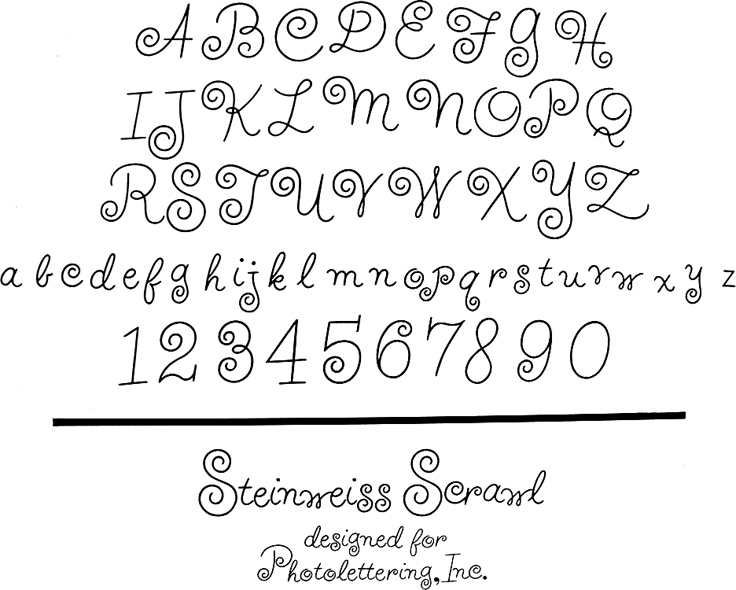 At any rate, shortly after completing the Steinweiss project for Taschen, I decided to pursue on my own the design of a font in the spirit of his calligraphy. The challenge was enormous—to create a typeface that retained the sense of hand-letting and fluidity within the context of a digital font. Where Steinweiss’ scrawls were all slightly different from each other, shifting and changing according to the needs of a particular cover design, a font designer has to commit to specific forms that need to be set in stone, so to speak. In this particular font, the “managed” nature of the design had to appear to be “unmanaged”!
At any rate, shortly after completing the Steinweiss project for Taschen, I decided to pursue on my own the design of a font in the spirit of his calligraphy. The challenge was enormous—to create a typeface that retained the sense of hand-letting and fluidity within the context of a digital font. Where Steinweiss’ scrawls were all slightly different from each other, shifting and changing according to the needs of a particular cover design, a font designer has to commit to specific forms that need to be set in stone, so to speak. In this particular font, the “managed” nature of the design had to appear to be “unmanaged”!
Part of my solution was to create the typeface with a ton of alternates, lowercase ligatures, and caps/lowerase ligatures. Creating this as an OpenType font would be the only way to wrangle these thousands of pieces together into a coherent typeface design. Luckily I was able to count on the expert programming help of Patrick Griffin of Canada Type. Also, I was fortunate enough to be able to contact the Steinweiss family through Taschen, and get the official Steinweiss approval for this font design.
At this point until the fonts are released (very soon!), for those interested in seeing more, you may download “The Steinweiss Script User’s Guide” that I’ve just completed (about 1.2 MB).
In a nutshell, here’s how the fonts are organized: “Steinweiss Script” is a family of fonts in three weights: “Steinweiss Script Light”, “Steinweiss Script Medium”, and “Steinweiss Script Bold”. Additionally, within each weight there are three variations: Simple, Fancy, and Titling. These relate to the size/ratio of the caps to the lowercase, the complexity of those caps, and the size of the ascenders/descenders on the lowercase characters. The reason for all this is to add usefulness to the font, making it accessible not just for headlines, but for longer passages of text as well.
I am going to try to release these fonts within the next week or so. Please stay tuned for more information! I will announce here as soon as they go live.
PEGs Cover Released w/Laura Smith Artwork
October 1, 2010 on 1:29 pm | By Michael | In Gigs, News | 3 CommentsYears ago I designed the cover for the 6th Edition of the “Graphic Artists Guild Handbook–Pricing & Ethical Guidelines”. I’d like to believe that my cover helped start a tradition of having excellent covers for the Guild’s main publication. Among the previous cover artists have been such luminaries as Lou Brooks, Noah Woods, John Hersey, and Richard McGuire—each with a decidedly different point of view and aesthetic. Now my wife, illustrator Laura Smith has joined that grand tradition.
The Graphic Artists Guild has just released the 13th Edition with Laura’s beautiful work gracing the front back and spine:
The cover artists chosen by the Guild for the this project have always been given free reign to come up with a theme that would be carried through the book. Laura chose a circus theme since two things she loves are storybook illustration and circus imagery. This is especially evident on the back cover of this book where she’s created and written copy for an elaborate series of spots highlighting in circus/storybook style various aspects of the business of design and illustration:
Laura has always been one of the few illustrators who understands how to completely integrate typography into her illustrations, and this cover really demonstrates that fact. The Guild has chosen to highlight Laura and tell more of this story in their Member Spotlight. But also please check out the rest of the Graphic Artists Guild website—it’s the only organization that’s totally devoted to promoting and protecting the social, economic and professional interests of all graphic artists.
I will be headlining an event that the LA Chapter of the Guild will be holding later this month in downtown Los Angeles . . . but more about that later.
+++++++++++++++++++++++++++++++++++++++++++++++++++++
I wasn’t going to post the PEGs cover I designed back in the day, but since Ms. Blake asked, here it is. Side note: the beginnings of the style that eventually became my Metroscript font can be seen in the word “Guidelines”.
Le Train Bleu @ Bloomingdale’s
July 30, 2010 on 12:59 pm | By Michael | In Gigs, Wayback Machine | 8 CommentsWhile in New York City to give a talk at the Type Directors Club Laura and I stopped in at Bloomingdale’s. I hadn’t been back to Bloomingdale’s for many years, so while there I thought I’d check to see if some signage I had designed for their “Le Train Bleu” restaurant might still be in use. To my utter amazement, my work was there—still in use after 30 years. The restaurant itself is a stunning recreation of a vintage dining car, and has been virtually unchanged inside since the day my work first adorned its entrance.
The Original “Le Train Bleu” was a luxury French night express train which carried wealthy and famous passengers between Calais and the French Riviera from 1922 until 1938.
Back in 1980 I had designed and painted art for two panels that were to bookend the stairway leading up to the restaurant. The challenge, as outlined to me by then Bloomingdale’s Creative Director John Jay, was to design a poster reminiscent of the great transport posters of the ’20s, ’30s and ’40s,—but in an extremely thin vertical format: almost a 4 to 1 height to width ratio. Also the design had to be able to mirror itself so that it could appear on either side of the entrance. Designing the piece so that one had almost a bird’s-eye view of the train which was letting out a very art-moderne steam stream seemed like a natural for the format.
This was not a typical project for me at the time because I had never executed a painting like this before. In addition the typography played a much smaller role in the design, and in the end was much more toned down than in most of my other work.
Above is the menu cover I designed as a companion to the stairway panels. It depicts the same train as in the panels from the more traditional “heroic” viewpoint seen in many transport posters of the time. I redid the lettering, but kept it in the same moderne style—only in a lighter weight. And unlike the panels the art for which I had painted in gouache, I did the menu cover as pre-separated mechanical art—much more akin to my current work which is usually done in Adobe Illustrator.
Additionally I had designed the “Le Train Bleu” seal or monogram that appears in relief outside the restaurant and on printed materials. This was much more akin to the type and letterform-centric work that I’ve become known for, and was designed to be very heraldic in nature. To my surprise this large monogram in relief was also still there, looking as fresh as the day it was first mounted in the vestibule of the restaurant at the top of the stairs.
For those who are interested there are prints of the Le Train Bleu vertical format artwork available on my ILLOZ site. These prints are finely produced, hand-crafted 12 color fine art lithographs that are virtually identical to the original painting.
Please also see my more recent supplemental posting on Le Train Bleu at Bloomingdale’s.
Powered by WordPress and Nifty Cube with Recetas theme design by Pablo Carnaghi.
Entries and comments feeds.
Valid XHTML and CSS.
